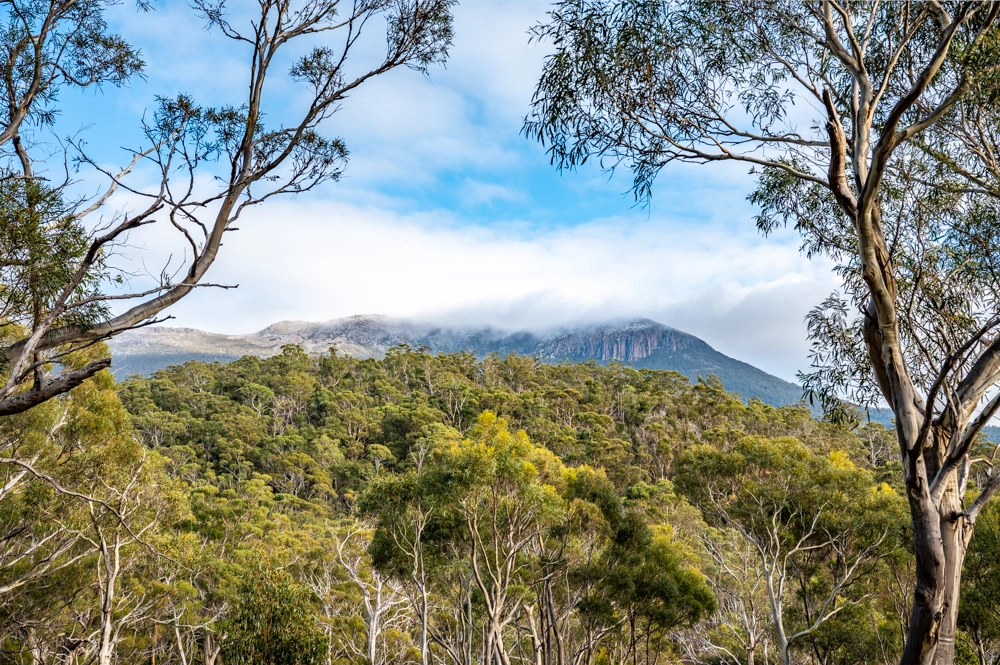

Two days on the other side of the planet and still haven’t seen anything. It’s a strange feeling. The body slowly realises that you’ve arrived in a different country. But even if the jet lag and exhaustion hadn’t yet been conquered, I wanted to get out and explore the surroundings. So I searched Google Maps for viewpoints and routes through Hobart. I came across the Waterworks Reserve to the west of Hobart. It’s within easy walking distance of Sandy Bay. So I set off for the mountains.

In Australia and Tasmania, everything is just somehow different. The houses with their thin walls and single-glazed windows reminded me of Vancouver and Victoria in British Columbia, Canada. Once I arrived in the forest, I also noticed how different the vegetation and the calls of the animals were. The entire soundscape of the forest seemed incredibly loud and varied. I had never heard it like this anywhere else before. It couldn’t be compared to what I knew from Europe or Canada. It was quite overwhelming for the first two hours. It seemed to come from everywhere, it was hard to tell from what height, or which Ties might be behind it. In Europe, I know many bird calls or animal sounds and can recognise the distance and direction from which they come. Here, everything was suddenly diffuse and new.

Suddenly something cackles in the distance. It almost sounded like a monkey! Had I lost my way to Africa? That could only mean one thing! Laughing Hans was on his way, the largest kingfisher in the world. Before I knew it, a squadron of kookaburras flew past me. What luck! One of the birds I really wanted to see here in Tasmania. And now it sat down on the branches in the immediate vicinity to watch me. The animal seemed quite relaxed and curious. It seemed to me that the kookaburra was much more relaxed than the German kingfisher or the belted kingfisher in Canada.
During my tour, I kept noticing how loud the animals’ calls were. Several individuals responded to every enquiry. The animals were very active and communicative. Only the forest floor remained quiet. I hadn’t seen an ant, snake or lizard yet, which wasn’t surprising given the temperatures were between one and 15 degrees.

During the tour to the small water reservoirs and back via Tolmanns Hill, it becomes clear that the weather in Hobart is difficult to predict. A mixture of clear skies, a brief drizzle and a haze. Mount Wellington and the neighbouring mountain ranges to the west block the rain from the west. The weather forecast can therefore not be trusted at all.